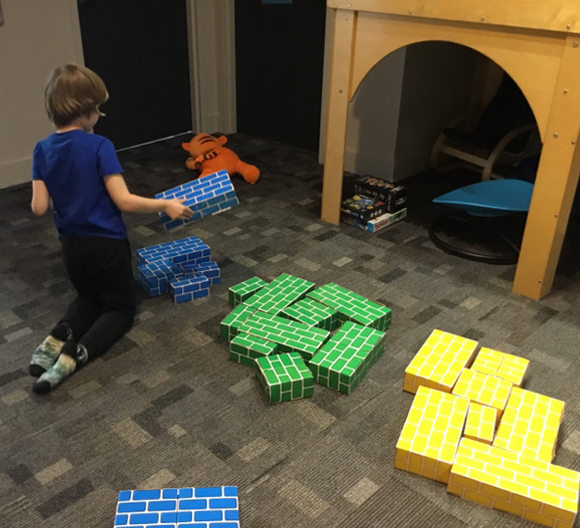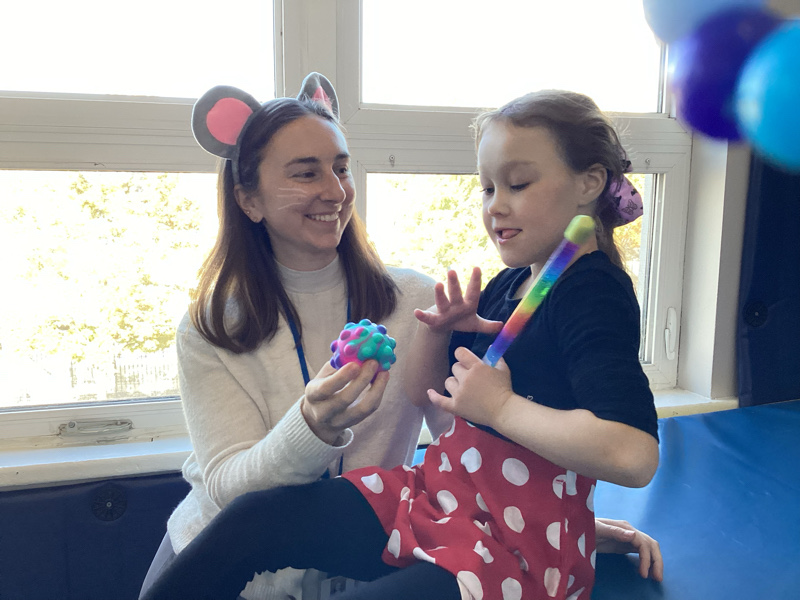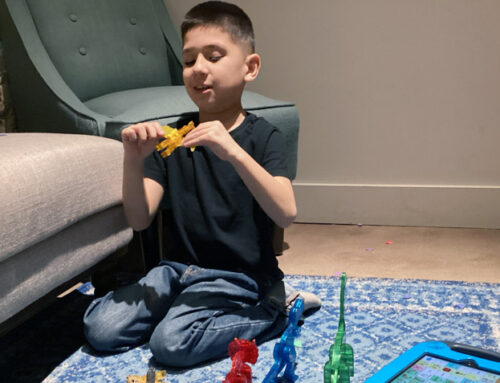When you tie your shoes, button a shirt, or catch a ball, your brain and body work together in a seamless, almost magical way. You think about the action, and your muscles execute it. For most of us, this process is so automatic we never give it a second thought. But what if there was a disconnect between your intention and your action? What if simple movements felt clumsy, uncoordinated, and frustratingly difficult?
For many children and adults, this is their daily reality. This condition is known as dyspraxia, also called Developmental Coordination Disorder (DCD). It’s not about muscle weakness or a lack of intelligence. Instead, it’s a neurological condition that affects the brain’s ability to plan and process motor tasks. We understand that getting a diagnosis or even just suspecting that your child is facing these struggles can feel overwhelming. Your concerns are completely valid. This guide is here to explain dyspraxia in simple terms, explore its impact, and offer supportive strategies to help your child build confidence and thrive.
What Exactly Is Dyspraxia (Praxis)?
To understand dyspraxia, it helps to first understand “praxis.” Praxis is the medical term for the process of planning and carrying out a new or unfamiliar motor action. It involves three main steps:
- Ideation (The Idea): Your brain conceives of what it wants to do. For example, “I want to kick that soccer ball.”
- Motor Planning (The Blueprint): Your brain creates a step-by-step plan to make it happen. It organizes the sequence of movements needed: which leg to use, how much force to apply, and how to position your body for balance.
- Execution (The Action): Your brain sends the right signals to your muscles to perform the planned movement.
In individuals with dyspraxia, there’s a breakdown somewhere in this chain. The message from the brain to the body gets jumbled. They might have a clear idea of what they want to do but struggle to create the motor plan or execute it smoothly. The result can look like clumsiness, but it’s much more complex than that. It’s a challenge with the very foundation of coordinated movement.
What Does Dyspraxia Look Like?
Dyspraxia affects each person differently, and its signs can change as a child grows. It’s often categorized into different types, such as gross motor (affecting large muscle movements) and fine motor (affecting small muscle movements). Here are some common indicators you might notice at various stages of development.
In Toddlers and Preschoolers:
- Delayed Milestones: They may be late to sit up, crawl (some may skip crawling altogether), walk, or speak.
- Difficulty with Toys: Trouble with puzzles, building blocks, or shape-sorters.
- Clumsiness: Frequent tripping, bumping into furniture, and difficulty navigating space.
- Challenges with Self-Care: Struggles to use a spoon or fork, drink from an open cup without spilling, or cooperate with getting dressed.
- Speech Difficulties: They may have trouble with pronunciation because coordinating the tongue and lips to form sounds is a complex motor task. This is sometimes called verbal dyspraxia or apraxia of speech.
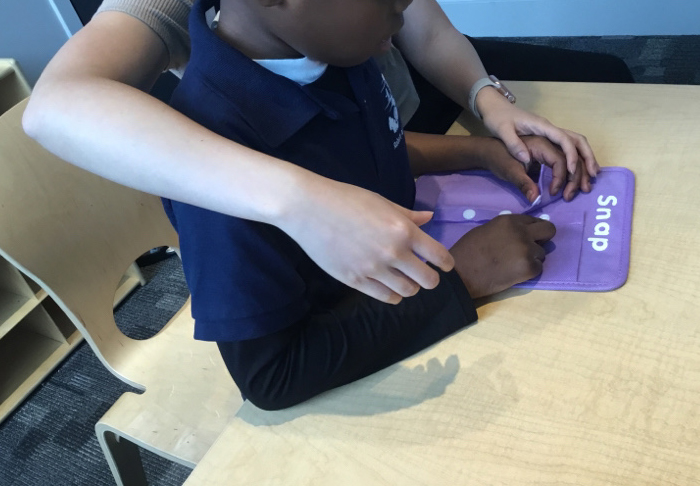
In School-Aged Children:
- Fine Motor Struggles: Messy handwriting, difficulty using scissors, trouble with buttons and zippers, and challenges with art projects. For example, they might grip a pencil too tightly or loosely, making writing exhausting.
- Gross Motor Difficulties: Trouble with running, jumping, skipping, or catching and throwing a ball. Physical education class can become a source of anxiety.
- Organizational Issues: They may have a messy backpack or desk, forget homework, and struggle to follow multi-step instructions. The mental planning required for organization is linked to the same processes as motor planning.
- Social Challenges: They might appear awkward in social situations, misjudge personal space, or have trouble keeping up with the fast-paced, non-verbal cues of playground games.
- Low Frustration Tolerance: Constant struggles with tasks others find easy can lead to frustration, low self-esteem, and avoidance of new activities.
In Teenagers and Adults:
The core challenges often persist, though many individuals develop effective coping strategies.
- Driving Difficulties: Coordinating the steering wheel, pedals, and mirrors can be extremely challenging.
- Household Chores: Tasks requiring coordination, like cooking or ironing, may be difficult and lead to accidents.
- Workplace Challenges: Difficulty with typing, organizing files, or other tasks requiring fine motor skills and planning.
- Continued Social Awkwardness: Trouble with reading body language and participating in sports or dance.
It’s important to remember that having one or two of these signs doesn’t automatically mean a person has dyspraxia. The diagnosis is typically made when these coordination difficulties are persistent, significantly interfere with daily life and academic achievement, and are not better explained by another medical condition.
What Causes Dyspraxia?
The exact cause of dyspraxia is not fully understood, but it is believed to be related to how neurons in the brain develop and transmit messages. It’s not caused by brain damage, but rather an immaturity in the development of motor pathways. Some risk factors that may contribute include:
- Premature Birth: Being born before 37 weeks.
- Low Birth Weight: Weighing less than 5.5 pounds at birth.
- Family History: Dyspraxia often runs in families, suggesting a genetic link.
- Prenatal Exposure: Maternal exposure to alcohol or drugs during pregnancy.
Dyspraxia is not a sign of low intelligence. In fact, many individuals with dyspraxia are of average or above-average intelligence. Their minds often work faster than their bodies can keep up, which can be a source of immense frustration.
Early Diagnosis and Intervention
If you suspect your child might have dyspraxia, seeking a professional evaluation is a crucial first step. We understand how overwhelming this can feel, but getting clarity is the start of finding solutions. A diagnosis can be made by a team of professionals, including pediatricians, occupational therapists, physical therapists, and psychologists.
Why is an early diagnosis so important?
- It Provides an Explanation: A diagnosis helps both you and your child understand that the struggles are not due to laziness or a lack of effort. This can be a huge relief and help preserve your child’s self-esteem.
- It Opens the Door to Support: With a formal diagnosis, your child can receive targeted therapy and accommodations at school, such as extra time on tests or the use of a laptop for notes.
- It Prevents Secondary Issues: Without support, the constant frustration of dyspraxia can lead to anxiety, depression, and social isolation. Early intervention helps build confidence and resilience.
At Eyas Landing, we partner with your family to find answers. Our team can conduct comprehensive diagnostic testing to provide a clear picture of your child’s unique strengths and challenges. Your next step is not to worry, but to gather information.
Therapy and Strategies
There is no “cure” for dyspraxia, but with the right support, individuals can learn to manage their challenges and lead successful, fulfilling lives. Therapy is about empowering your child with the tools they need to navigate their world. Our approach is always collaborative—together, we will create a plan that fits your family’s goals.
Occupational Therapy (OT)
Occupational therapy is often the primary intervention for dyspraxia. OTs are experts in the “occupations” of daily life—everything from playing and learning to getting dressed and eating. They use a playful, evidence-based approach to build motor skills. An OT session might not look like work at all. It might involve:
- Building an Obstacle Course: To improve balance, sequencing, and body awareness.
- Playing with Therapy Putty or Beads: To strengthen hand muscles and improve fine motor control.
- Task-Specific Practice: An OT will break down a difficult task, like tying shoelaces, into small, manageable steps. For instance, they might start with making loops, then practice crossing them, and so on, celebrating each small success. This approach, part of what’s called task analysis, makes learning achievable and reduces frustration.
Physical Therapy (PT)
If a child’s challenges are primarily with gross motor skills like balance, running, or core strength, a physical therapist can design exercises and activities to improve their overall physical coordination and endurance.
Speech Therapy
For children with verbal dyspraxia, a speech-language pathologist can help them learn how to plan and execute the movements needed for clear speech. They use multi-sensory techniques, like using mirrors to show tongue placement, to make the connection between movement and sound.
Our Multi-Disciplinary Approach
At Eyas Landing, we believe in comprehensive care under one roof. Your child’s unique journey may require support from different specialists, and our team collaborates closely to ensure everyone is working toward the same goals. An OT might share strategies with your child’s teacher, or a speech therapist might work alongside a behavior therapist to help your child communicate their needs effectively. This integrated model ensures that skills learned in therapy are carried over into real-life settings like home and school.
Practical Tips for Parents and Families
Your support at home is incredibly powerful. The goal is not to eliminate every struggle, but to create an environment where your child feels safe to try, fail, and try again.
- Break Down Tasks: Just like an OT, you can break down multi-step activities. Instead of saying “get ready for school,” try “first, let’s put on your shirt,” followed by “now, let’s brush your teeth.”
- Choose Adaptive Clothing and Tools: Look for shoes with Velcro, pants with elastic waistbands, and pencil grips. These simple adaptations can reduce daily frustration and promote independence.
- Focus on Effort, Not Perfection: Praise your child for trying hard, not just for succeeding. Say, “I love how you kept working on that puzzle!” This builds resilience.
- Find Their Strengths: Many children with dyspraxia excel in areas that don’t rely on motor coordination, like creative thinking, verbal reasoning, or technology. Nurture these talents to build their overall confidence.
- Practice, Practice, Practice: Repetition helps build motor pathways in the brain. Keep practice sessions short, fun, and positive. Turn it into a game whenever possible.
- Be Their Advocate: Work with your child’s school to ensure they get the accommodations they need. This might include a copy of the teacher’s notes, using a keyboard instead of handwriting, or having a quiet space to work.
Discovering that your child has dyspraxia can feel like a detour on the parenting journey you expected, but it is not a dead end. Your child is the same wonderful person they were before you had a name for their challenges. This diagnosis is simply a map that can guide you toward the right kinds of support.
At Eyas Landing, our mission is to help your child transform potential into progress. We have seen countless children who once struggled to hold a crayon go on to create beautiful art. We have watched children who were afraid of the playground become leaders in games. These breakthroughs happen when children are given the right tools, in a supportive environment, by specialists you can trust.
Your child’s journey with dyspraxia is unique, and it will have its share of ups and downs. But with empathy-driven care, patience, and a focus on their incredible strengths, they can overcome obstacles and build a bright, confident future. We are here to meet your family where you are and walk with you, every step of the way.
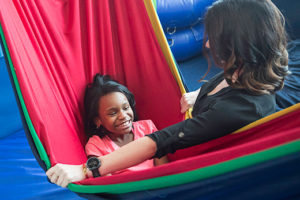
Eyas Landing is a therapy clinic with a mission to provide evidence-based and family-centered therapy services for children, adolescents, and their families. The primary goal is to deliver relationship-based interventions within the most natural environments and to empower families to reach their full potential. To achieve this goal, our highly educated, compassionate staff dedicates time and expertise to create experiences that maximize therapeutic outcomes. The strength, determination, and perseverance of our clients are evident as they succeed in therapy, and ultimately in their daily lives.
Eyas Landing offers a wide range of comprehensive services including Speech Therapy, Occupational Therapy, Physical Therapy, ABA Therapy, Social Work, Family Therapy, and Neuropsych testing. Services are provided throughout the Chicagoland area via Telehealth, In-Home, and in our state of the art clinic.
Want to learn more or you have a specific question? Feel free to connect with us here!

